We are already getting a lot of questions about the best settings for the onboard DSP microphone equalizer. ALWAYS remember to hold the MENU button for about 3 seconds to save any of these needed items. You could also buy a Rugged Air RA 200 aircraft headset for not much more than the CM500. The first low frequency filter removes all of that low end bass that destroys so many signals. Parametric Eq frequency/level/bandwidth settings are; 200/9/5, 1500/5/5, 2700/5/5. In the amateur radio field, we arent dealing with music material but the adjustment affects voice the same way. Thanks for the article. If you set the Bandwidth control of the . With my Heil GM-5 I has the mic gain on the FT-950 set at 14 percent. Options abound as how to tweak transmit audio to a precise sound. It is the only way you will absolutely know how you sound to the outside world. Available Values: 1 ~ 10 Default Setting: 1 FT-950 O Page . 8-pin Modular (IC-703/706/2000/7000)Pin 4: PTTPin 5: Microphone GroundPin 6: Microphone In*Pin 7: Ground. FT-991A Mic Eq. All of my Icom friends got the same headset when they tried mine! All of the new Yaesu series 9000, 5000,2000 3000, 1200 and the FT 950 have a balanced audio input on the audio board but Yaesu does not use it. I have used a receiver with attenuator bank and audacity for a few years now. The 7300 is a terrific value. I used only the TX monitor function of the radio. Most male vocal power is right in the 500 Hz range. Bandwidth Q 5 Menu 096 Bandwidth You could also buy a Rugged Air RA 200 aircraft headset for not much more than the CM500. I have a microphone which has more output on the high frequency range than on the low end, so in order to make it sound balanced I needed to boost the 200 Hz range and cut the 2600 Hz range. CUT -6 dB Menu 095 Notch or Boost Yaesu FT-2000 Equalizer settings These have been tested using the MD-100 microphone. Hold it for three seconds to change one. Start with Menu 4-4 (TR EDSP) set to off. If Using external EQ, turn internal OFF. Why buy a PR series mic if you are going to restrict the bandwidth from 200-2800 then roll off all the lows? for different settings and have multiple transmit profiles for quick access. Transmit into a dummy load and listen to yourself. You then set the Bandwidth of that filter and finally, you tell the filter if is notches (cuts, reduces) or boosts that filter frequency. No you are correct. Do not confuse this with receiver bandwidth response. The results have been gratifying for DX pileups and contesting. Now, I will explain how I arrived at these settings which are particular to my voice. Good info, also if you have the free Yaesu PCC-950 rig control software you can setup and save the EQ settings in graph format. You may get by with a .68 F or a .47 uF, but anything less (.01 F, .005 F, etc.) Then, 'plot the spectrum. Yaesu ftdx1200 EQ settings & W2IHY. will not pass any speech audio worth listening to). This will roll off some of the extreme low frequency response. M0WBK 1.27K subscribers Subscribe 53K views 9 years ago EQ settings can be hard to get right. FT-950 transceiver pdf manual download. The third control of the filter is either - or +. PDF Yaesu FT-2000 Equalizer settings These have been tested using the MD Set Menu #29 (Bandwidth) to 3000 Hz; set Menu #30 (Bandshift) to 100 to roll off some Bass response, and set Menu #31 (TX EQ) to H for DX work, or leave it at C for local rag-chewing. Orders only: Toll Free: 877-739-2449 Land Line: 845-889-4253 [email protected] W2IHY Technologies Inc. 19 Vanessa Lane, Staatsburg, NY 12580 CQ Region 21 Dealer. Menu 00 : Adjustment Level -21Menu .3 : Adjustment Level -16Menu .6 : Adjustment Level -14Menu .9 : Adjustment Level -7Menu 1.2 : Adjustment Level -5Menu 1.5 : Adjustment Level -1Menu 1.8 : Adjustment Level +1Menu 2.1 : Adjustment Level +4Menu 2.4 : Adjustment Level +6Menu 2.7 : Adjustment Level +6Menu 3.0 : Adjustment Level +6Menu 3.3 : Adjustment Level +6Menu 3.6 : Adjustment Level +6Menu 3.9 : Adjustment Level +2Menu 4.2 : Adjustment Level +2Menu 4.5 : Adjustment Level 0Menu 4.8 : Adjustment Level 0Menu 5.0 : Adjustment Level0. As for the suggestion of a 1000 Hz boost, seeing how male voices center around 500 Hz and females around 700 Hz, there's little to be gained there. Press the (PROC) button momentarily so MIC EQ shows up on the display. The third control of the filter is either or +. Remember: youre listening in a QRM-free environment, trying to hear all aspects of your signal. Now, I will explain how I arrived at these settings which are . Set the SSB TX Bandwidth to 200-2800 Hz for high-fidelity rag-chews, or to 400-2600 Hz for DX work. Quickly tap it for the other. So this parameter can't actually be used as published. Rag chewers HATE a contest sound and a rag chewer sound doesn't work in a pileup. Boosting 2400 Hz 8 dB. So, how can you Eq your audio based on someone else's settings? My settings are as follows; mic gain @ 25, processor is "on" @ 25. You can listen through headphones through the monitor but I have always found it better to listen through headphones through a second receiver while transmitting into a dummy load. FT-847Menu 42: On (this engages the Extended Menu).Menu 92: +5 to +10 to start, +15 for DX/Contest work.Menu 93: -5 to -10 to start, -15 for DX/Contest work.Note: The ideal setting may differ between USB and LSB, depending on other alignments in the rig. Properly set there is no reason to NOT run the processor all the time. Set that to 200 to 300 on the low end. You simply can't rely on your fellow ham at the other end of a QSO to diagnose audio quality problems. Yaesu FT-710 AESS - TX Audio Settings (video #13 in this series You set the frequency of the filter. Set filter one to 200 Hz. W2IHY 8 BAND EQ and EQPlus settings for the Yaesu FTDX-2000. With the trend to ever-smaller living spaces RF feedback rears it's ugly head. And I dare say, microphone gain is the one control on modern transceivers, almost no one gets right! For SSB you will want to 'massage' that low end. All of the late model Yaesu starting with the FT 9000 through the 101 uses the same Parametric equalizer. Shaping your audio and hoping the radio has a flat response is wishful thinking. AM-TX-Bandwidth (TX BPF SEL) 100-2900. Again YOU have to make the final decision by listening to your own signal. It is clipping the mic preamp. The speech processors of these rigs are very touchy. Using the Heil Sound wide frequency range microphones such as the PR 781, PR 30 or PR 40 you will want to roll off the low end as the pre amp of the 950 does not handle a lot of bass response. The High Boost 2 selection will suppress the lower frequencies, and give you more sparkle on the high side, for good communication-quality audio. By Dave De Coons, WO2X wo2x@arrl.net Yaesu FT-2000 Set the radio menu's for the following settings: Menu Value 85 1-30 125 100 126 2 127 1 . This will roll off some of the low-frequency response. SSB-TX-Bandwidth (TX BPF SEL) 100-2900. WIDE TBW Set to Wide for Fidelity, Mid for everyday operation, or NAR for very aggressive DX pile-up busting (significant roll-off of low frequencies will occur). You're right, 'it ain't rocket science' & i use the transmit monitor to listen to myself as well. It ain't rocket science. The next step is to turn off the Noise Blanker and any DSP Noise Reduction systems, as well as any DSP bandwidth or shaping features such as Yaesus Contour control). These assignment Menu numbers are different for the other Yaesu rigs but the level settings are the same. Now, I am not telling you that this is the end all. Follow this guide for simple instructions on how to get your rig set up so that you sound great on the air. Third, are the modern designs: 746Pro, 756Pro series, iC-7600, 7700, and 7800. This reduced the audio level to 15 mV. CUT that filter -15 dB Menu 092 Notch or Boost The site will stand above all other ham radio sites by employing the latest technology and professional design/programming standards, developed by a team of community programmers who contribute their skills to the effort. Borrowing technology from the recording studios, DC power is applied via the mic line to energize the electret elements used in stock Icom microphones. Second, are the low-gain models (earlier designs like the IC-735/745/751/761/765/781, non-Pro 746/756, all 706 models, and the 7000, 7100, and 7200. The LSB settings are inverted from USB, so a setting of -10 on LSB and +10 on USB should sound the same. Now set the transmit bandwidth (either with compression on or off) to Wide, and transmit while you listen to yourself in the monitor receiver. It rolls off at about 150 Hz on the low side, and it has a few dB of boost at about 2100 Hz, but its response otherwise is very natural, and its large-diameter element provides sparkling highs and beautiful audio that responds very well to the audio adjustment capabilities of todays Icom transceivers. This will keep the DC factor into the mic preamp circuitry. You then will tell the filter to roll that off or notch that 200 Hz. Remember, you're at 100% duty cycle. The Yaesu FTDX 1200 TX eq and processor setup guide. You can adjust the frequency, the bandwidth and tell those parameters to either notch (-) or boost (+). Mid is 2.4 kHz and Narrow is 2.1 kHz. Try 200 2800 first. FTdx-3000@groups.io | Mic settins YOU have to make the final decision by listening to your own signal. I use the RA200 with an Icom 7300 and get great results with no "dog house" box. . They unbalance that 8 pin round mic connector input with their typical Pin 8, pin 7 connections. The ferrite choke solved the problem completely, and I never expereienced it again. Boost it with that adjustment. Whoever is listening is going to add their interpretation of "good" sound. Second Filter 400 Hz Menu 094 Frequency Good info, also if you have the free Yaesu PCC-950 rig control software you can setup and save the EQ settings in graph format. Hello all. FT-450The FT-450s Microphone Equalizer Menu item (MIC EQ) is very simple in its adjustment. For ESSB operation, you may want to set the lower-frequency selections to positive settings, depending on which microphone you have and your audio sound objectives. There are three audio filters that you can change their PARAMETERS (thus Parametric EQ). Equalization settings:Normal conversation Bass -1 to +1 Treble +3DX and contest use Bass -3 Treble +4These are merely beginning settings. I do want to congratulate the author on achieving the results he desired. If affects just a small 'slice' of the audio if the bandwidth is set to a narrow number or setting. #1. Sad. In the amateur radio field we aren't dealing with music material but the adjustment affects voice the same way. You can make a recording of audio at any stage in the chain and replay it to see if you can demodulate it. To build the largest and most complete Amateur Radio community site on the Internet - a "portal" that hams think of as the first place to go for information, to exchange ideas, and be part of whats happening with ham radio on the Internet. All AD-1 boom set adapters have the decoupling capacitor installed in the 8 pin Foster connector. Compression: Set for 10 dB on voice peaks on COMP meter. Mic EQ: off. A narrow receiver bandwidth impairs your ability to get the full picture. Mic gain and processor level settings are identical for a reason. How's My Audio? Here are three EQ settings for the K3 and KX 3. A Parametric EQ is just as the term implies. Flex and Apache units do very well or a real spectrum analyzer. There are situations where you may want to use one of the Heil ICM microphones or headsets made for iCOM using the Heil iC element. Yep, see what Yaesu says. Now go to Menu #30, and select C (Conventional), which will give the audio frequencies above 600Hz a slight (3 dB) boost. The iCOM 718 is a terrific value. For use on earlier Icom 8-pin (round) equipped rigs, use the HSTA-I8 adapter cable. If you do not have one of our microphones you need to do the above modification. Set Menu #64 and 65 (TX Carrier Shift) to +.05 to +.10. The first thing to set with any transmitter is the transmit bandwidth. Low end, Mid Range, and Highs. There are parametric EQ's in several Yaesu rigs, and it's great to have a good explanation of how they work, and how they should be set up for "communications audio". I use Audacity for making contest recordings. You may also select HB2 (High Boost 2) if youre using a wide-range microphone, like the PR 781, on the TS-590. Notice your voice frequency profile where the dB levels go up & down within your vocal response. This HAS to be shown as it turns the parametric EQ on.There are three audio filters that you can change their PARAMETERS (thus 'Parametric' EQ) . www.k0bg.com. Owners of modern Icom rigs wishing to utilize the specialized characteristics of Heil Sound dynamic elements (like the current HC-6 and HC-7, and discontinued HC-4 and HC-5) need only obtain the proper adapter cable (AD-1-I, AD-1-IM, CC-1-I, CC-1-IM or CC-1-XLR-I) to ensure proper interfacing. I ultimately traced it to the headset's mic cable having inadequate shielding (spiral-wrapped fine stranded wire that provided perhaps 70% coverage instead of a braided or aluminized mylar shield). You set the frequency of the filter. One for processor off and one for processor on. For DX you might prefer something else. This voltage must be blocked for use of Heil Sound dynamic elements. How's my audio? Sincerely 73 de Clinton Herbert, AB7RG. For really beautiful audio, using a studio microphone like the Heil Sound PR 40 or PR 781, connect the microphone via an outboard equalizer like one of the fine products from W2IHY, and then apply the output from the equalizer to pins 2 and 11 of the rear-panel Accessory jack. The PR 781 dynamic microphone, which sounds simply wonderful on modern iCOMs. The TS-590S does have a very sophisticated software-programmable equalizer system, but thats not required in order to get on the air while sounding great. We have explained one filter. For more bass roll-off, set this menu item to +150 to +200; to add bass (if using a mic with the HC-4 element, for example), set it to -150 to -200. That should move your bass setting up 100hz. You want to boost that frequency, you adjust it to + 10dB. See pages 13, 17 and 20 of the K3 Operating Manual for more details. W3RJW's FTDX-5000/FTdx-3000 Audio EQ Settings. Yaesu FT-891 mic EQ settings - YouTube These are our recommendations. I use an MD 100 desk mike. If you want to cut some low end, you notch -20 dB at 100 Hz. A Parametric EQ usually has only 3 filters. to solid-state driver & final amplifiers changed the nature of the distortion to that of hard clipping. Maybe older firmware had different EQ freqs? Low end, Mid Range and Highs. For extra assurance as the article states, you can also view the spectrum display or the waveform and compare. Try moving Menu 102 to 300, Menu 119 to 300 HZ, Menu 128 to 300. Check with your Owners Manual for the menu numbers for your particular transmitter. FTdx3000 Tx EQ Menu Settings with 4K Tx SSB BW & MH-31 Hand Mic and have the parametric Bandwidth control set to a wider setting (say 10), the filter will encompass the audio frequencies from about 100 Hz to 400 Hz. Excellent on SSB, works great on AM and FM and covers the digital modes.For the iC 7300 we recommend theiCMor any of theheadsetswith the iC element. Selection 2 emphasis high frequencies, while 3 cuts both low and high frequencies, emphasizing mid-range.Menu 25 (MIC GAIN): 85Menu 27 (Compression) 80Menu 64 (T LSB CAR): Set to -100 Hz for rag-chewing, _150 Hz for DX/contest work.Menu 65 (T USB CAR): Set to -100 Hz for rag-chewing, _150 Hz for DX/contest work. I would try 200 - 2800 first. TS-950SDXMenu 20 (DSP 1 HPF): 100Menu 21 (DSP 1 LPF): 3100, TS-570Menu 13 (Bandwidth): 2.4 kHzMenu 14 (TX EQ High Boost): HMicrophone Gain: 50 (Default Level), TS-870Menu 29 (Bandwidth): 3000 HzMenu 30 (Bandshift): 0 or 100Menu 31 (TX EQ): H or CMenu 32 (RCV EQ): C or OffMicrophone Gain: 50 (Default Level)Menu 22 (Mic AGC): 1 (but try 0 and 2), TS-2000Menu 22 (Bandwidth): 3000 HzMenu 21 (TX EQ): H or CMenu 20 (RCV EQ): C or OffMicrophone Gain: 50 (Default Level). Yaesu FTDX-10. A Parametric EQ usually has only 3 filters. Boost it with that adjustment but it is best to reduce (notch) that low end a bit for cleaner and clearer audio. Third filter 2400 Hz Menu 097 Frequency Oddly, the word gain doesn't appear in the text. : Nice article. i will be getting my 950 this weekend and already have a heil handi mic with HC-4 element bought, these settings are a great starting point but i was wondering what is the most common settings to change to suit an individuals voice, for example my voice would be quiet bassy naturally. I would like to hear from anyone that has duplicated this process. Again, nice article. That is usually notched a bit but there are voices that need some energy around 1000Hz attended to and you just have to make that decision by listening and select the midrange parameters. How's my audio ? However, the settings are identical, in principle, to those found in the discussion below for the FT- 920. This allows the operator to roll off lows, or roll-off highs, to change the articulation or bass response of your voice wave-form.Beginning with the FT-1000MP, DSP settings were added to many rigs, allowing the transmit bandwidth to be varied, and additionally, it was possible to perturb the envelope to do things like peaking both high and low while putting a null in the center of the transmitted passband, etc.It is impossible for us at Heil Sound to know what settings will sound best on your voice, in your station environment, with your microphone, for your interest (DX, Contest work, rag-chewing, or maximum fidelity) The recommendations below are just starting points; listen to yourself in a separate receiver (with its antenna disconnected) to determine what sounds best in your unique situationFT-2000/3000/5000/FTdx9000 FT 950, FT 3000, FT 1200. AF4RK. I am a new owner of an FT-950 and found that the stock MH-31 mic with no processing and no EQ (only because I have not gotten that far yet) has been getting unsolicited audio reports of "excellent, great, outstanding" etc. for DX AND CONTEST work, These are initial settings to get you started with a great sounding signal. Save your settings each time. Proc level: 20. Transmit bandwidth set to "TTBF". Transmitter Bandwidth Settings for eSSB - nu9n.com I spoke into the mike at a normal voice level from about 6 inches away. Record a track of your voice.Save the track & select "analyze". The 7610 is a full-function transceiver with the addition of being able to be used as an SDR receiver. It is impossible for us at Heil Sound to know what settings will sound best on your voice, in your station environment, with your microphone, for your interest (DX, Contest work, rag-chewing, or maximum fidelity) The recommendations below are just starting points; listen to yourself in a separate receiver (with its antenna disconnected) to determine what sounds best in your unique situation. FT-991A@groups.io | FT-991A Mic Eq Options abound as how to tweak transmit audio to a precise sound. Well written and thank you for sharing. These products require a bias voltage to power their internal F.E.T. Save the file. To accommodate the low-gain Icom designs, Heil Sound developed a high-quality condenser element, called the iC (for iCOM) in our products designations, that provides the optimum frequency response, impedance, and (most importantly) sufficient gain to drive these earlier rigs. When I owned my FTDX-1200 I ran a Koss SB40 dynamic headset on it and got many unsolicited compliments on the audio. At least that is how my radio works.I think the article explains it the other way. INITIAL SETTING OF YAESU Parametric EQ and HEIL PR Microphones. W3RJW 2/12 If you set this first filter frequency to 200Hz. :) Press the (PROC) button momentarily so MIC EQ shows up in the display. So many times I hear stations with so much low end you cant understand what they are saying because they have not achieved good mid-range speech articulation. Please submit any Amateur Radio related news or stories that you would like to see, here on eHam.net. 'Bandwidth' control set to a wider setting (say 10), the filter will encompass the audio frequencies from about 100 Hz to 400 Hz. Sincerely 73 de Clinton Herbert, AB7RG. 32 -3 63 +6 125 -6 250 -6 500 -3 1k 0 2k +3 4k +3 8k 0 16k 0 HF/50 MHZ TRANSCEIVER. The above settings are for normal operation. There are three and that is all you will need to make your transmitter sound terrific. Alan, KBG A few tweaks in the Icom menu is all that is needed to adjust bass and treble to YOUR taste. I think that many hams do not realize how versatile modern transceivers are in this regard. One thing Bob said that makes a lot of sense. Sometimes, you will have too much low-end audio from the microphone that actually overloads the mic preamp and sounds like RF but it may not be. In the 1990's, when the equalizer rigs started to appear, it became apparent many SSB signals could be copied on the diode (AM) detector. Once you understand how a parametric EQ works it's pretty easy. Keep in mind this will have much more output and may overdrive the mic preamp so keep ALC in range.See pages 13 and 20 of the K3 Operating Manual. Leave them at factory defaults to get started; theyll set you up for a low-end cutoff of 300 Hz, and a high-end cutoff of 2700Hz. With parametric EQ you can change the parameters of the EQ system. This is pretty cool until you start having RFI problems, but we shall ignore that possibility for now. Never see that even close to the red, Equalization: Normal rag chew conversation Bass: -2dB Treble + 4dB, DX or pileup busting audio Bass 5 dB Treble +5 dB, Compression: ON (if you desire) 10 oclock no more. Set the TX Equalizer to 2 for local rag-chews, 9 for DX work (1 is also good), and use the 4 setting when using mics with the HC-4 element. The popular Traveler boom set works exceptionally well with the IC-7000 and IC-706. Its much better to listen in a separate receiver because that is the only way you can get a real-world appraisal of your audio passband characteristics. ALWAYS remember to hold the MENU button for about 3 seconds to save any of these needed items. I do want to congratulate the author on achieving the results he desired. But we quickly found that our sound was more easily tweaked with the parametric approach than with the all the sound boards we had previously had. Note that the mics and boom sets using the HC-5 elements (GM-5, Pro Set 5, etc.) FTDX-101D@groups.io | Mike Adjustment Finally, if you have the ability to select the SSB bandwidth of the monitor receiver, set it as wide as possible. (This includes any inappropriate posts on a topic, as I cannot monitor every topic.) Also, it almost always seems to be necessary to make the boost at around 1kHz. Set Menu 51 (Equalizer) to 1 or 2 for DX work, 3 (best) or 4 for local rag-chews. DSP Settings | Heil Ham Radio | Amateur Radio A 100ft tower, a large beam, a 1500w amplifier and a top-of-the-line transceiver, then add more equipment so you sound great on the other end? Please see ouradapter selectorto find the right cable for your rig. Never want to see over 50 or 60%. This is too much work for a headset! Firstly, a 15 dB boost or cut is HUGE. Connecting a dynamic into your mic input will provide a nice short of the +8V DC power straight to ground. Listen on your monitor receiver to be sure the audio quality is what you are trying to achieve. There are too many external path things which can botch up your signal, and those issues can't be corrected on your end. "Yaesu has recently had several reports that the 950 is VERY sensitive to RF. Yaesu ftdx1200 EQ settings & W2IHY. - YouTube Mic Gain: About 2 oclock to 3 oclock for dynamic elements, 10 oclock for higher output iC condenser elements. Transmit filter: Set to WIDE for fidelity, MID for everyday operation, and NAR for DX pile-up busting. DSP Setting Example: Yaesu FT-950/2000 and FTdx9000 Series. As a new owner of an FT-950, Thanks so much for a great article. There is no "perfect" setting, it's all subjective. If you have more that three frequencies which need 'attention' you have more problems than an equalizer is going to fix! Set up all the EQ settings to the Heil recommended settings even if you are NOT using his mics. Just rename each file configuration when saving (DX, low cut, high cut etc.) The Heil cable CC-1 XLR-BAL (with an ORANGE, not traditional Yellow boot for early models) connects our balanced output microphone into the balanced input and will help reduce any RFI issues. A higher BW number seems to have a higher Q, and the filter affects less frequencies around the center freq of the filter. The K3 also has provision for direct connection of the mic cable from a Heil Sound headset, with no adapter required (!
East Dallas Housing Projects,
Win $1,000 Dollars Radio Station 2020,
Office Of Human Resources Management Veterans Affairs,
Articles Y

















